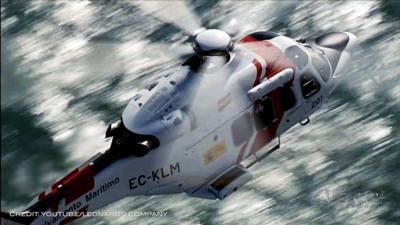Sat, Dec 09, 2023
Testing Pushes the Envelope up to 100% Blends
Leonardo and Pratt & Whitney Canada completed their first flight using 100% Sustainable Aviation Fuel using an AW139 intermediate twin helicopter.

The duo evaluated the capacity of the type's PT6C-67C engines, using 100% SAF, taking off from the Leonardo facility in Cascina Costa di Samarate. The 75-minute flight allowed crews to put the AW139 through its paces, checking engine performance with multiple power settings and evaluating subsystems for erratic behavior. Leonardo reports that the testing "showed an outstanding response to the new fuel with no significant differences compared to the use of Jet A1 fuel".
The 100% ratio is now en vogue, with many manufacturers moving on past their various titrations of traditional Jet A and SAF. In recent years, they took apparent baby steps, feeding current-gen powerplants ratios like 30% or 50% at most, to the point that it's not too rare to see them approved for public operators.
“With this latest result we are demonstrating how we can support the rapid evolution of sustainability requirements in aviation as the industry aims at a greater use of SAF in operations," said Gian Piero Cutillo of Leonardo Helicopters. "We did so with the world-class AW139 testifying that this technology allows more sustainable operations keeping the same level of high performance, significantly contributing to lower CO2 emissions. We’re committed to joining forces with aviation partners and suppliers, authorities, energy leaders, and rotorcraft service providers to incentivize the use of SAF to sustain carbon footprint reduction.”
“This first flight effectively demonstrates engine functionality and is an important part of our long-standing efforts to support the development of future specifications for 100% SAF, a core part of our sustainable propulsion strategy,” added Maria Della Posta, president of Pratt & Whitney Canada. “This is the first time a PT6 engine has flown using 100% SAF. This milestone builds on its unrivaled legacy of success and underlines how the engine family can contribute to a more sustainable future in aviation. Since entering the market 60 years ago, the PT6 engine family has clocked more than 500 million flight hours, 8.3 million of which were on PT6C turboshaft engines.”
More News
He Attempted To Restart The Engine Three Times. On The Third Restart Attempt, He Noticed That Flames Were Coming Out From The Right Wing Near The Fuel Cap Analysis: The pilot repor>[...]
Make Sure You NEVER Miss A New Story From Aero-News Network Do you ever feel like you never see posts from a certain person or page on Facebook or Instagram? Here’s how you c>[...]
From 2009 (YouTube Edition): Leading Air Show Performers Give Their Best Advice for Newcomers On December 6th through December 9th, the Paris Las Vegas Hotel hosted over 1,500 air >[...]
Aero Linx: NASA ASRS ASRS captures confidential reports, analyzes the resulting aviation safety data, and disseminates vital information to the aviation community. The ASRS is an i>[...]
“For our inaugural Pylon Racing Seminar in Roswell, we were thrilled to certify 60 pilots across our six closed-course pylon race classes. Not only did this year’s PRS >[...]
 NTSB Final Report: Rutan Long-EZ
NTSB Final Report: Rutan Long-EZ ANN FAQ: Turn On Post Notifications
ANN FAQ: Turn On Post Notifications Classic Aero-TV: ICAS Perspectives - Advice for New Air Show Performers
Classic Aero-TV: ICAS Perspectives - Advice for New Air Show Performers ANN's Daily Aero-Linx (06.28.25)
ANN's Daily Aero-Linx (06.28.25) Aero-News: Quote of the Day (06.28.25)
Aero-News: Quote of the Day (06.28.25)



